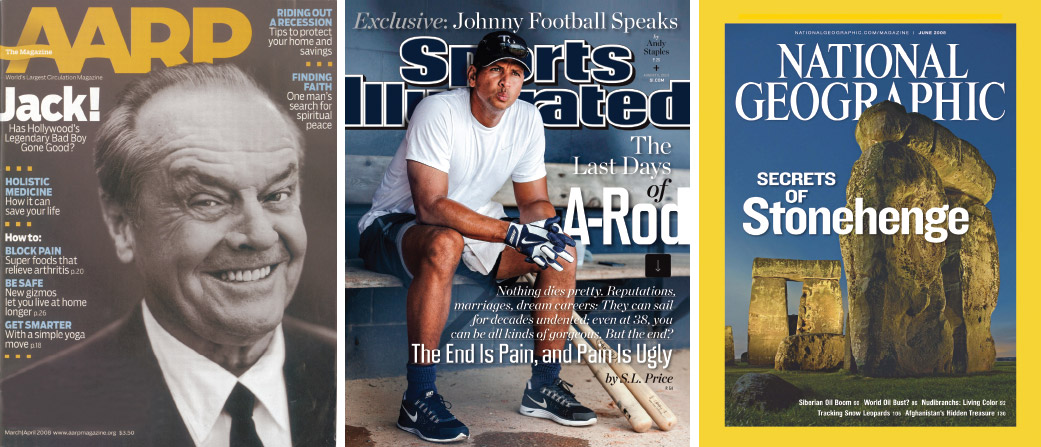Sports, Entertainment, and Leisure Magazines
In the age of specialization, magazine executives have developed multiple magazines for fans of soap operas, running, tennis, golf, hunting, quilting, antiquing, surfing, and video games, to name only a few. Within categories, magazines specialize further, targeting older or younger runners, men or women golfers, duck hunters or bird-watchers, and midwestern or southern antique collectors.

The most popular sports and leisure magazine is Sports Illustrated, which took its name from a failed 1935 publication. Launched in 1954 by Henry Luce’s Time Inc., Sports Illustrated was initially aimed at well-educated, middle-class men. It has become the most successful general sports magazine in history, covering everything from major-league sports and mountain climbing to foxhunting and snorkeling. Although frequently criticized for its immensely profitable but exploitative yearly swimsuit edition, Sports Illustrated also has done major investigative pieces—for example, on racketeering in boxing and on land conservation. Its circulation held steady at 3.2 million in 2013. Sports Illustrated competes directly with ESPN The Magazine and indirectly with dozens of leisure and niche sports magazine competitors like Golf Digest, Outside, and Pro Football Weekly.
Another popular magazine type that fits loosely into the leisure category includes magazines devoted to music—everything from hip-hop’s The Source to country’s Country Weekly. The all-time circulation champ in this category is Rolling Stone, started in 1967 as an irreverent, left-wing political and cultural magazine by twenty-one-year-old Jann Wenner. Once considered an alternative magazine, by 1982 Rolling Stone had paddled into the mainstream with a circulation approaching 800,000; by 2013, it had a circulation of more than 1.4 million. Many fans of the early Rolling Stone, however, disappointed with its move to increase circulation and reflect mainstream consumer values, turned to less high–gloss alternatives such as Spin.
Founded in 1888 by Boston lawyer Gardiner Green Hubbard and his famous son-in-law, Alexander Graham Bell, National Geographic promoted “humanized geography” and helped pioneer color photography in 1910. It was also the first publication to publish both undersea and aerial color photographs. In addition, many of National Geographic’s nature and culture specials on television, which began in 1965, rank among the most popular programs in the history of public television. National Geographic’s popularity grew slowly and steadily throughout the twentieth century, reaching 1 million in circulation in 1935 and 10 million in the 1970s. In the late 1990s, its circulation of paid subscriptions slipped to under 9 million. Other media ventures (for example, a cable channel and atlases) provided new revenue as circulation for the magazine continued to slide, falling to 4.2 million in 2013 (but with 3 million in international distribution). Despite its falling circulation, National Geographic is often recognized as one of the country’s best magazines for its reporting and photojournalism. Today, National Geographic competes with other travel and geography magazines like Discover, Smithsonian, Travel & Leisure, Condé Nast Traveler, and its own National Geographic Traveler.